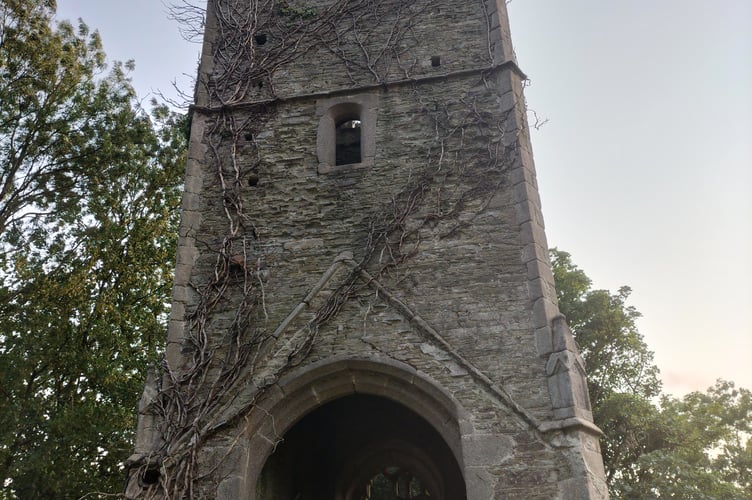Lanndege: Lann – early church enclosure; de - your; Ge (Ke) – saint’s name
What3words - ///glows.thunder.touchy
Orth penn bownder hir, yma bargen-tir bras ha rybdho y hyll’ta gweles, dres nebes gwedhennow, eglos. Ha ty ow nes an eglos byttegyns ty a wel bos hanter-distruys an tour, ha nyns eus remenant an eglos gesys, marnas korflan gempenn ha kosel hepken.

At the end of a long lane there is a big farm, and by it you can see, through a few trees, a church. As you approach the church, though, you can see that the tower is half-ruined, and none of the rest of the church remains, just a tidy, peaceful churchyard.
Ottomma (dell grysir) le may tiras Sen Ke dyworth Iwerdhon y’n pympes kansbledhen. Mes yth esa an eglos ma re bell dyworth brassa rann an pluw Ke. Eglos nowydh a veu drehevys ytho yn kres an pluw, ha rakhenna yth yw an gwig ma henwys ‘Ke Koth’.
This, it is believed, is where Saint Ke landed from Ireland in the fifth century. But the church was too far from most of the parish, so a new church was built in the middle of the parish, which is why this hamlet is called ‘Old Kea’.
Mes yma marth orth dha wortos. Ryb an magor yma eglos aral fest byghan. Kevrin munys yw an tyller ma, ryb Dowr Fala.
But a surprise awaits you. Near the ruin there is another very small church. This place is a tiny secret by the River Fal.
An Rosweyth is a community organisation which exists to promote the use of the Cornish language. For further information, visit www.speakcornish.com




